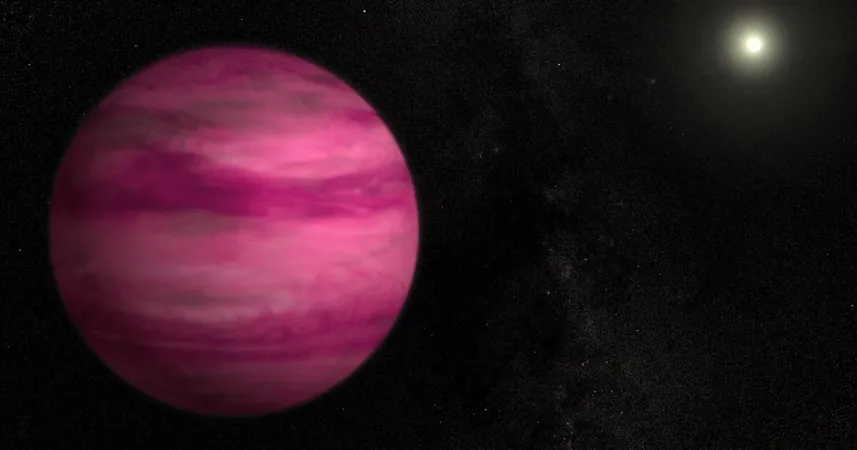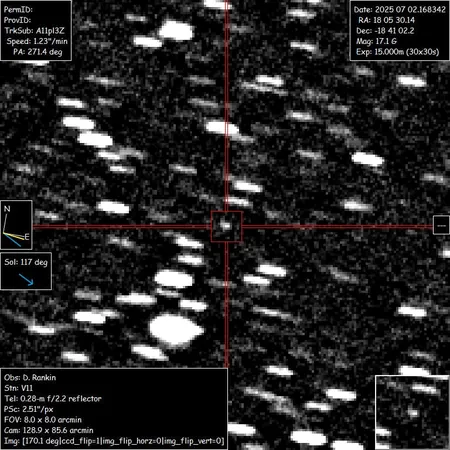
The Quest for Exoplanets: Are We Close to Finding Our Twin?
2025-01-21
Author: Emma
Introduction
For centuries, the idea of planets revolving around stars beyond our solar system existed primarily in the realm of speculation. However, in 1992, scientists confirmed the very first exoplanets, igniting a surge of curiosity about these distant worlds and their compositions. Fast forward to today, with advancements in technology, astronomers have developed several innovative techniques to discover and study exoplanets.
Discovery Methods
Among these methods is the renowned transit method, which allows astronomers to detect planets by observing the minuscule dimming of a star’s light as a planet passes in front of it. This groundbreaking technique, combined with modern observational tools, has resulted in the identification of thousands of exoplanets.
Expert Insights
Prominent in the field of exoplanet research is Dr. Sara Seager, an esteemed professor at MIT. Recently, she highlighted the incredible capabilities of the James Webb Space Telescope, stating, "It’s literally taking us to the next level. It is helping us study exoplanet atmospheres." What’s fascinating is that the most common type of planet discovered in our galaxy so far are those that fall between the size of Earth and Neptune, referred to as "sub-Neptunes," a category that has no equivalent in our own solar system. "We don’t know what they’re made of. We don’t know how they formed, and it’s just crazily mysterious," she added.
Cultural Comparison
Dr. Seager compared the excitement of discovering new exoplanets to science fiction, mentioning how society has transitioned from fantasizing about other worlds in films like "Star Wars" and "Star Trek" to recognizing their existence in reality. The thrill doesn’t stop there; NASA's recent mission to Jupiter’s icy moon Europa aims to uncover potential signs of life in its subsurface ocean. The findings from Europa could provide invaluable insights that aid in the search for life on exoplanets.
Challenges Ahead
However, Dr. Seager cautions that the search for extraterrestrial life remains exceptionally complex. "What we look for as signs of life can often be confused with phenomena such as volcanic activity, lightning, or meteoric delivery," she explained. This multitude of variables complicates our ability to make definitive claims about life on distant worlds.
The Ultimate Aspiration
Seager’s ultimate aspiration is to discover an "Earth twin"—a planet that mirrors our own in size and orbits a star similar to the Sun. She acknowledges that this ambitious endeavor requires specialized telescopes placed in space to obscure the sunlight and provide a clearer view of potentially habitable planets.
Conclusion
In a universe brimming with possibilities, astronomers are more active than ever in their search for worlds that could harbor life. One can only imagine the secrets waiting to be uncovered among the stars. As technology advances, the age-old dream of finding a sibling planet to Earth may soon transition from fantasy to reality. Are we on the brink of discovering our celestial counterpart? The search continues, and the stakes have never been higher!









 Brasil (PT)
Brasil (PT)
 Canada (EN)
Canada (EN)
 Chile (ES)
Chile (ES)
 Česko (CS)
Česko (CS)
 대한민국 (KO)
대한민국 (KO)
 España (ES)
España (ES)
 France (FR)
France (FR)
 Hong Kong (EN)
Hong Kong (EN)
 Italia (IT)
Italia (IT)
 日本 (JA)
日本 (JA)
 Magyarország (HU)
Magyarország (HU)
 Norge (NO)
Norge (NO)
 Polska (PL)
Polska (PL)
 Schweiz (DE)
Schweiz (DE)
 Singapore (EN)
Singapore (EN)
 Sverige (SV)
Sverige (SV)
 Suomi (FI)
Suomi (FI)
 Türkiye (TR)
Türkiye (TR)
 الإمارات العربية المتحدة (AR)
الإمارات العربية المتحدة (AR)